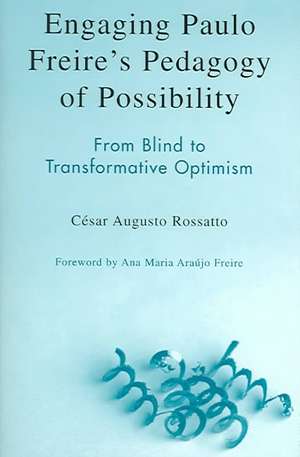Engaging Paulo Freire's Pedagogy of Possibility
Autor Cesar Augusto Rossattoen Limba Engleză Paperback – 20 noi 2004
Preț: 401.26 lei
Nou
Puncte Express: 602
Preț estimativ în valută:
76.79€ • 79.33$ • 63.87£
76.79€ • 79.33$ • 63.87£
Carte tipărită la comandă
Livrare economică 19 martie-02 aprilie
Preluare comenzi: 021 569.72.76
Specificații
ISBN-13: 9780742536975
ISBN-10: 0742536971
Pagini: 198
Ilustrații: Illustrations
Dimensiuni: 150 x 226 x 15 mm
Greutate: 0.29 kg
Ediția:New.
Editura: Rowman & Littlefield
ISBN-10: 0742536971
Pagini: 198
Ilustrații: Illustrations
Dimensiuni: 150 x 226 x 15 mm
Greutate: 0.29 kg
Ediția:New.
Editura: Rowman & Littlefield
Notă biografică
Cuprins
Chapter 1 Foreword Chapter 2 Introduction: A Personal Perspective Chapter 3 Seeing Fatalism and Optimism from a Freirean Perspective Chapter 4 Time Consciousness Chapter 5 Blind Optimism Chapter 6 Fatalistic Optimism Chapter 7 The Impact of U.S. Standardized Testing in the Context of the Four Categories of Optimism Chapter 7 Resilient Optimism Chapter 8 Transformative Optimism Chapter 8 Theoretical Implications for Children's Development, Studies on the Concept of Time, the Centeredness of School Pedagogy, and Critical Pedagogies Chapter 11 Policy Implications, Recommendations, and Conclusions
